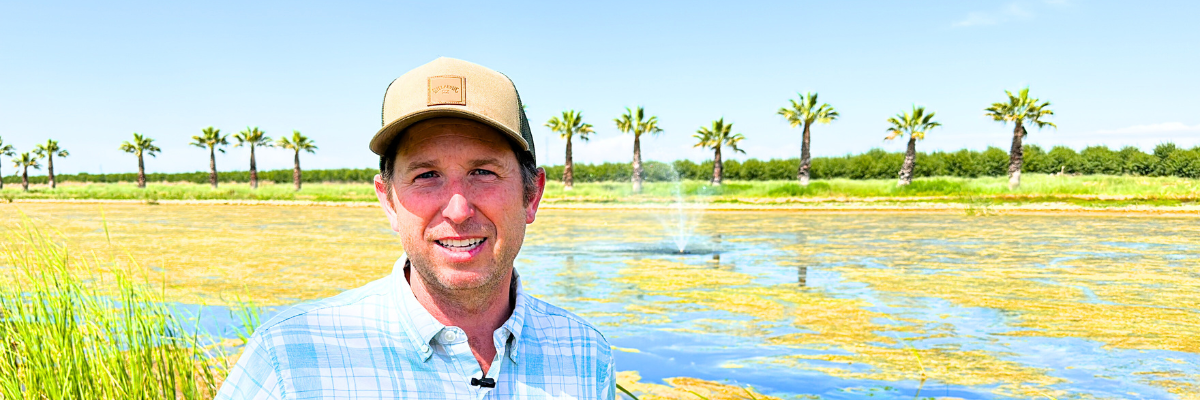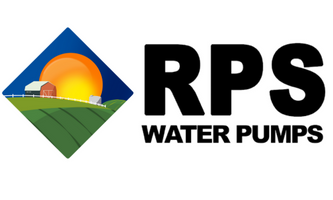

Answering Your Water Pump Questions
with RPS Engineer Mike

AC Well Pump Buyers Guide for Ranchers (110V and 220V)
For the last decade, RPS has worked closely with ranchers all over the United States to solve water problems for cattle, sheep, horses, chickens, pigs and dogs. Planning water delivery methods for a large operation can be challenging if you're trying to figure it out all by yourself. Our engineers are here to help if you have any questions. Here's a few tips we've learned along the way...
Well Not Drilled Yet? Start Here
Received a Quote That Might be Overpriced?
Let say you received a quote for drilling a well and the quote includes the price for a well pump plus installation. We've had lots of people call us and ask "is $XX,XXX price normal to be quoted?". On one hand, the price for well drilling varies DRASTICALLY from state to state. On the other hand, the price of the water pump shouldn't cost an arm and a leg. Well drillers buy pumps at hidden dealer prices, which they can then mark up to whatever number they want. Sometimes the cost of the well drilling and labor is folded into the price of the submersible well pump as well. We're not saying that's necessarily a bad business model, but there have been numerous examples of customers receiving ludicrously high quotes.
Professional Installation vs DIY Well Pump Installation
What's the solution? Buying the well pump yourself from a company like RPS (who manufactures and sells their own pumps without any middleman or dealer markup). If your well isn't deeper than 300-400 feet, think about installing a pump yourself. You can install a pump yourself if the well is deeper than 400 feet, but you'll need a tractor or machinery to help hold the weight up. Ask your well driller for a quote for JUST drilling the well. And if you don't want to install yourself, get a quote from the well driller for well drilling + installation of a pump that you'll source yourself.
Installation of a submersible well pump should only take a few hours, especially if you have all of the parts together beforehand to avoid running around to stores the day of. Maybe set aside a weekend if you have to run significant conduit or trenching. Even hooking up the electrical is pretty simple for a newbie.
New Well Owner? Make Sure to Get a Well Log
Great, you just got a well drilled and now you're wondering what kind of pump to stick the hole. The well driller should provide you with a copy of the well log which will include data like the depth of well, static water level, casing diameter etc. Then either use this well pump sizing tool (with 99% accuracy!) and/or give one of our pump technicians a call and they can help size you.
Existing Well?
Need Help Finding Your Well Log? We’ve compiled a list of well log databases by state, if your state doesn’t have a link or you aren’t able to find you well log within one of these databases, contact your local county office and they may have the well log on file. Well log records reliability depend on when a state or county passed laws requiring well drillers to submit copies of logs after drilling. Some of these laws passed recently, some passed back in the late 1900’s. As a last ditch effort you may try to contact the well driller directly to see if they still have your well log on file. The drillers name is sometimes found on the well casing or near the pump controller.
Types of Well Pumps
Submersible Well Pumps
Submersible well pumps are an excellent choice for ranchers. They are installed below the water level, usually at least 20 feet from the bottom of the well and 220V 3 Wire options are highly efficient. Ranchers have installed submersible pumps in deep wells, in pons, and they've also installed submersible pumps sideways in irrigation ditches and rivers. You'll find options from RPS up to 20HP.
Material and Durability
Note on the importance of an ALL STAINLESS STEEL outer submersible well pump: lots of brands say they use stainless steel, but they actually use a combination of plastic / brass / cast iron / stainless steel. Not only is having two unlike metals in the same water source a big no-no, and can result in early rusting from a process called electrolysis, but these materials don't wear well over time and can cause early pump failure. So beware of amazon, Ebay and even big box store brands not quite being truthful on quality.
Jet Well Pumps
Jet well pumps are versatile and suitable for shallower wells. They work by pulling water up from the well and are often used for residential and smaller agricultural applications. While they may not be as efficient as submersible pumps, they can be budget-friendly. HOWEVER, most jet pumps can only suction water from about max 25 feet down into the well, and can be an easier mark for thieves. Most ranchers prefer the submersible pump.
How to Size a Water Pump
The typical calculation for sizing a water pump comes down to...
-static water level ( how far down from the top of the well is it to the top of the water in the well). Measure this is feet
-if you don't know your static water level then we'll use total well depth. but note that this could result in you getting a lot more pump and spending a bit more money than would have been needed if we knew static water level. On the other hand, most ranchers are more than happy to "oversize" rather than undersize, just in case the static water level drops due to drought in the future.
-drawdown. water levels in the well may fluctuate seasonally, or drop after a pump starts operating in the well. An estimate on how far those water levels drop is a good insurance plan for sizing the pump correctly.
- frictional loss from pipe over distance. Bigger pipe diameter will decrease frictional loss, especially in the case of pumping at higher flow rates. So we'll also need to know the measurement of the longest run of pipe after it gets out of the well
-Vertical lift from the well. If the pump has to push UPHILL after the water gets out of the well, we'll need to know the elevation change from the well to the intended destination. Or, if you're pumping into an elevated storage tank, just the distance to the top of the tank
-PSI from the pressure tank. If you're using a pressure tank, its basically like asking the pump to push uphill, for example 60 psi is like pumping up a 140 foot high hill.
An example calculation for a 500 foot well, with a 250 foot static water level, pumping into a normal stock tank ( without the use of a pressure tank)
250 feet static water level + 5 feet into the top of the stock tank + 5 feet from frictional loss estimate = 260 feet of head
An example calculation for a 500 foot well, with a 250 foot static water level, pumping into a frost free stock tank (using a 45 psi pressure tank)
250 feet static water level + 104 feet into the top of the stock tank + 5 feet from frictional loss estimate = 359 feet of head
Things to Consider (Think About YOUR Ranch)
How Many Head of Livestock Need Water?
Animal water consumption is generally calculated in gallons per day (GPD) per head livestock. To start sizing a well pump, we like to first estimate the amount of water each animal will need, multiplied by the size of the herd (number of head). Example:
Usually we estimate 20 gallons per head of cattle per day.
50 head x 20 GPD = 1,000 GPD
The goal is to help find a water pump that can pump and tank the right amount of water for you and your animals, meeting or exceeding the desired GPD.
An 8GPM pump would only need to run for about 2 hours to provide the 1,000 gallons your cows want to drink!
Estimate Max Flow Rate Needed and Water Needs
If you plan on irrigating pasture as well as providing water to your cattle, you'll need to estimate what the highest flow rate you'll require to do both tasks ( if cows and plants are thirsty at the same time).
For example, if you want to run 5 sprinklers, each 5 GPM, and 5GPM to the stock tank. So you'll need 5x5=25 gallons per minute + 5 gallons per minute for the tank = 30 gallons per minute highest flow rate. This is worst case scenario planning!
Get A Storage Tank
A storage tank that feeds into stock tanks is the IDEAL setup. Storage tanks hold days worth of water that can then be dispersed on demand to animal stock tanks. We like to plan for the unexpected at RPS, think about if the power goes out for a fews days after a bad storm. A storage tank would be a lifesaver to hold the ranch over until you can get generators or the power back on.
Plan on Expanding the Ranch In the Future?
If you only need 5 GPM from a well pump now, but plan on adding livestock, houses or irrigation in the future. Size up the pump for FUTURE plans. There isn't a huge cost different up front, but the time to pull the old pump, and reinstall a new one will cost you another weekend in the long run, plus the cost of a brand new pump.
Take Advantage of Solar Power
RPS has a sister company, RPS Solar Pumps who specialize in converting AC pumps over to solar power. Any 110V or 220V AC water pump can use solar power, you simply just swap out the starter box to a new control box and hook up panels! You can even get NRCS and government funding for a solar pump to offset costs.
Maintenance
If you've got high dissolved solids, iron bacteria or brackish water, you'll have to be more alert on checking the pump every couple of years for potential issues. Unless the water quality is really horrible, most people are just fine never touching the submersible well pump again until its time for a replacement.
Take the Next Step to Water Independence
Learn More About Water Pumps
-
 If you’re considering replacing a well pump and it’s your first time, you may have questions about long it may take. We often say a full install only has to be a couple of hours, but is that actually accurate?Read now
If you’re considering replacing a well pump and it’s your first time, you may have questions about long it may take. We often say a full install only has to be a couple of hours, but is that actually accurate?Read now -

How many GPM is a good well pump?
Water needs can differ significantly depending on circumstances, and you may need a submersible well pump with a significantly higher or lower flow rate, depending on household size, irrigation needs, and sprinkler use.Read now -

Can you put in too big of a pressure tank?
When it comes to sizing a well pressure tank, there really isn’t an upper limit as to how big of a tank you can put in. There are some pros and cons to different size pressure tanks, and they can have an impact on the lifespan of your pump.Read now




